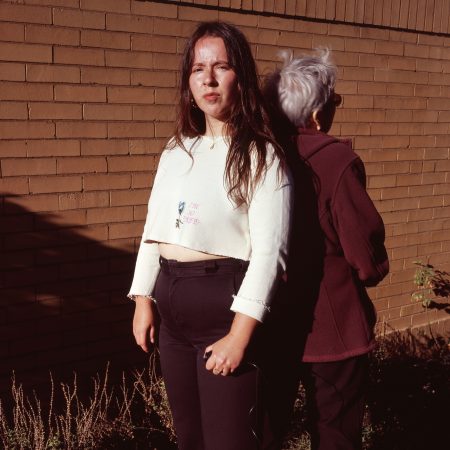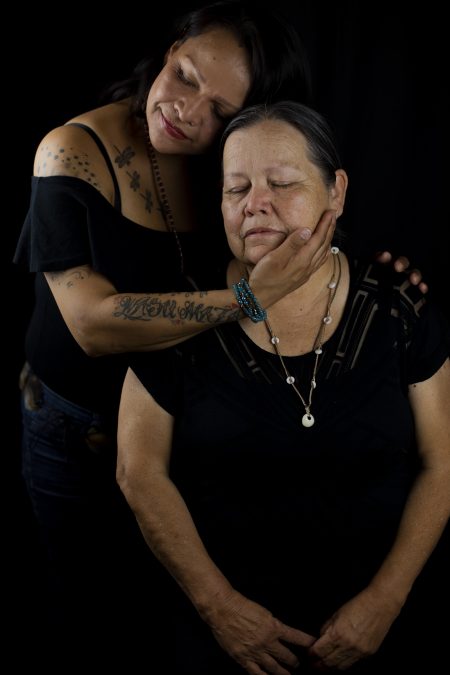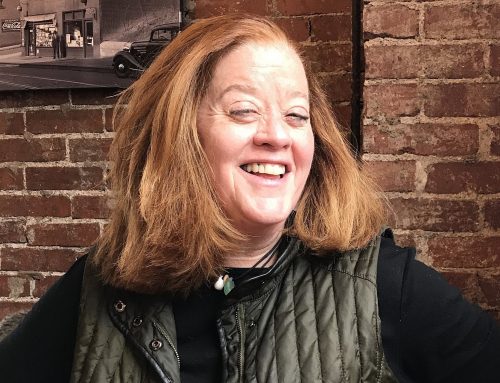Meet the panelists for our March 31 event in partnership with PEN America
In advance of Belt’s “Documenting Home” event on March 31, visual editor Njaimeh Njie posed a few questions to each of the featured panelists to help our readers get to know them and their work better. You can register for the webinar here.
___
Samantha Cabrera Friend | Chicago, IL

What motivated you to pick up a camera to begin with?
If I had to peel back the layers, I came into photography with a pretty heavy, self imposed motivation to get “better” at what I liked. My mom had a camera she used extensively throughout her adult life, but I had thought it (in combination with me) was not fully capable of making “real” pictures. Once a great teacher and mentor taught me otherwise, it demolished my phantom obstacle and set the tone for my future.
As far as actual work, I was interested in what I thought photography was; not because I loved pictures really, but because I watched a lot of movies, shows, and infomercials growing up. I was always interested in real life, and showing threads of real life which I wanted others to be able to see. At that age it just begins with whatever you find interesting to you and only you. Then you follow that. Now, I am beginning to see those interests return back to where they actually derived; answering a call to activate more audio, video, staging and public interaction in my work.
You use lens based work as a gateway to sharing community narratives. Why is it important to you to employ a rigorous writing, and research process in addition to your photography?
I really value devoted work, and any methodologies that are shaped by passion. For me that just happens to look like research and writing. Though I end up sharing largely lens based work, I recognize and value the skills I activate to get there. I find the work done in preparation for a final piece, and the many intentional steps in between, are important and fruitful to note because they are intrinsic to the art itself.
My kind of research involves what I would describe as an immersive process of independent expression; a “pre-interest” in those that I am planning to publicly display interest in through my chosen medium. Writing is more of a part of me that I intently listen to throughout. Realistically, writing represents what I could be found doing at the drop of a hat as opposed to jumping out and making an entire photograph.
At its best, research sets a standard of awareness, curiosity, and respect that can beautifully inform you as you make your work. It should be a welcoming process that takes many forms. It can last as long as it needs to or sometimes as long as it can. I do believe we should see research as a more integral step of preparation before bringing our bodies into any new space, let alone while seeking to make work outside of ourselves.

“Women Arrive and Leave Together” (2019). The family of Garduño Esquivel has traveled from Barrío Calvarío, a small town in San Felipe del Progreso near their state capitol of Toluca, Mexico. Living over six hours by away by ground transportation, they planned to visit the Virgin early and will not be returning for the day of the official feast. While their husbands and brother are at work during the week of the Virgin, they came with all the family they could bring.
It’s powerful to see your work in and with communities here in the US, but also in Mexico and Latin America as well. How has your work evolved, or shifted gears, in light of the pandemic?
I am an American, I am also Mexican. But the reason I have always felt invested in my work outside the US, specifically in México, is because they consistently and fully mirror the issues of the greater world–just in different ways and to varying degrees. Before we can feel far away from problems we deem as more severe outside the States, we should consider the high priority, performance, and falsehood of safety optics which our country prides itself on.
Though we hold immensely different issues between México and Latin America, the need to subvert the patriarchal hegemony may unite us. Therefore, whenever I am making work at home in the US, it informs the work I propose to make in México. Conversely, I propose the work I do in México knowing it will change my practice once I return to the US.
The planning, writing, research, and applying I do have always been a slow-moving work. But this past year pushed me to honor my needs of self, and eventually to tend to long term considerations–a substantial project in the making. Each project for me that got cancelled, was somehow meant to be cancelled, and I believe there is always a way to keep moving. Actively prioritizing your own inherent mental health needs is included in these motions, and I feel grateful to have acquired a new journey in self as a result of every fragment of life shifting in the pandemic.
You can find more of Samantha’s work at her website.
___
Rachel Elise Thomas | Detroit, MI

What made you decide to pick up a camera to begin with?

Rachel’s mother, Michelle Nunn-Thomas observes what’s going on outside her bedroom window at our home in Southfield, MI on Sunday, April 5, 2020.
Growing up, my biggest influence was attending the African World Festival. In Detroit, there were a lot of different cultural festivals, but that is by far my favorite. In my late teens, I started documenting the Festival through my perspective. I would take people’s portraits and photograph anything that piqued my interest. That turned out to be such a meaningful experience that helped shape my career as a photographer.
You use photography and collage to tell stories about an array of Black communities and experiences. What do you think some common themes are in your work, or in your approach to both mediums?
Overall, there’s a really strong portrayal of cultural pride that is apparent in both mediums, but my collages exclusively feature Black women. Whether they’re images of Black women from advertisements or family photographs, I purposely revolve the subject matter around Black women. I’ve also noticed that a lot of my work is colorful. It’s very apparent in my collages and in my documentary work, you can see those pops of color even in the muted and quiet moments, it’s always there. I believe that I’m subconsciously attracted to it.
I’m very moved by your series documenting your personal experiences during the pandemic. How do you think your photography practice has evolved over the past year?
This past year, early in the pandemic and in quarantine, I made the decision to let my guard down and be transparent with what I’m documenting. I don’t think I’ve ever been this honest and vulnerable with my personal work before. It made me uncomfortable at first because I wasn’t used to that, but I felt that the only way my COVID Diary would be successful is if I was completely honest with what I’m experiencing.
You can find more of Rachel’s work at her website.
___
Jaida Grey Eagle | Twin Cities, MN

What motivated you to pick up a camera to begin with?
This is always so tough to answer because I never really feel like this was ever an absolute decision on my part; it always just was a part of my life. I used to make visual narratives with my Game Boy camera, using my siblings as characters in my stories. I was given a Polaroid I think at nine or ten years old and was just always in charge of documenting family events. I used to take my family’s film cameras and just shoot entire rolls within a few hours. Eventually, in high school, my parents bought me a tiny little digital camera that I broke within six months because I used it so often. I think it was then they realized, “Oh wow, she’s serious about this and needs a serious camera”. So, picking up the camera just became a habit, and now it’s my whole life–but it really always has been.

HollyElk and Bernie Lafferty, as photographed in Jaida Grey Eagle’s “Winyan” series.
Your Winyan series involves portraiture, interviewing, and audio recording. Why is it important to you to use multiple mediums as you work to reclaim narratives of your community?
Winyan is and was the way that I rooted my practice within photography. Every decision I make in regards to how I approach stories–and will continue to in the future–is all derived from what I was able to do within this series. Within this specific series, the dialogue of consent and collaboration was the basis of where I was coming from. I found a certain way to further that dialogue was through multiple mediums such as audio, interviewing, and photography.
I really fight back against this narrative that anyone is voiceless, or that it is anyone’s responsibility to speak for anyone else; in reality we’re facing damaging power dynamics within this country, even within journalism. So, I found empowerment in the multimedia approach because it was me behind the questions and behind the camera, but it was very much the people within the photographs using their voices.
With your protest documentation, I’m taken with your ability to find a single story in the midst of so much of action. What does it mean to you to be able to document today’s social justice movement?
During rallies and protests I’m drawn to certain people, there are always the people who are doing things and don’t realize anyone is watching. Those are the people who I want to talk to. They are the ones who are looking out for everyone’s safety, or speaking, but then going back to their families. I think what it means for me to be able to document today’s social movements and actions is to know that I notice those things–to know that I’m there, and maybe I’m seeing people and their stories that someone else might not have. ■
You can find more of Jaida’s work at her website.
Belt Magazine is a 501(c)(3) nonprofit organization. To support more independent writing and journalism made by and for the Rust Belt and greater Midwest, make a donation to Belt Magazine, or become a member starting at just $5 a month.






